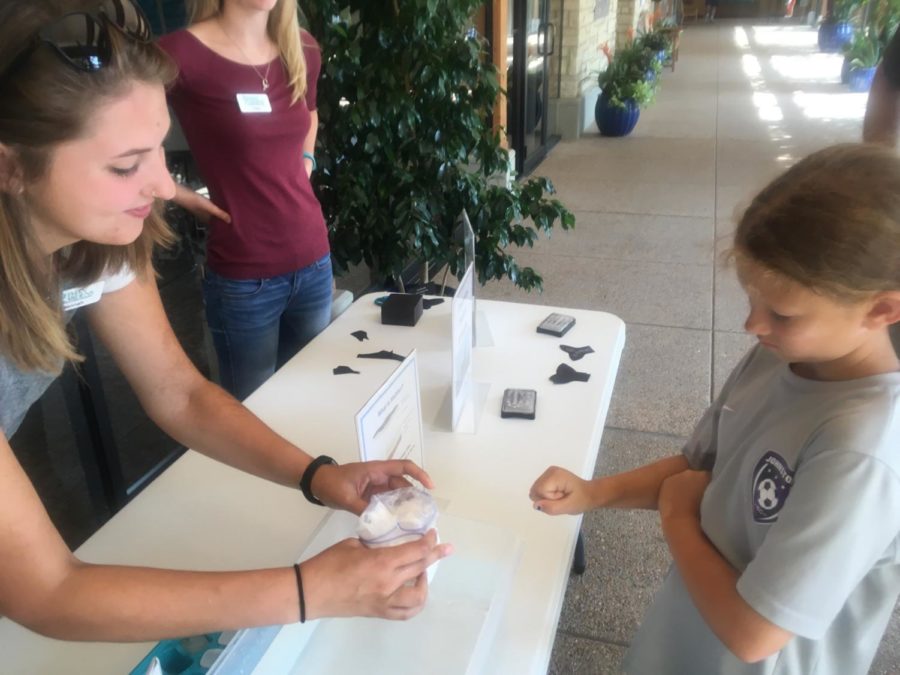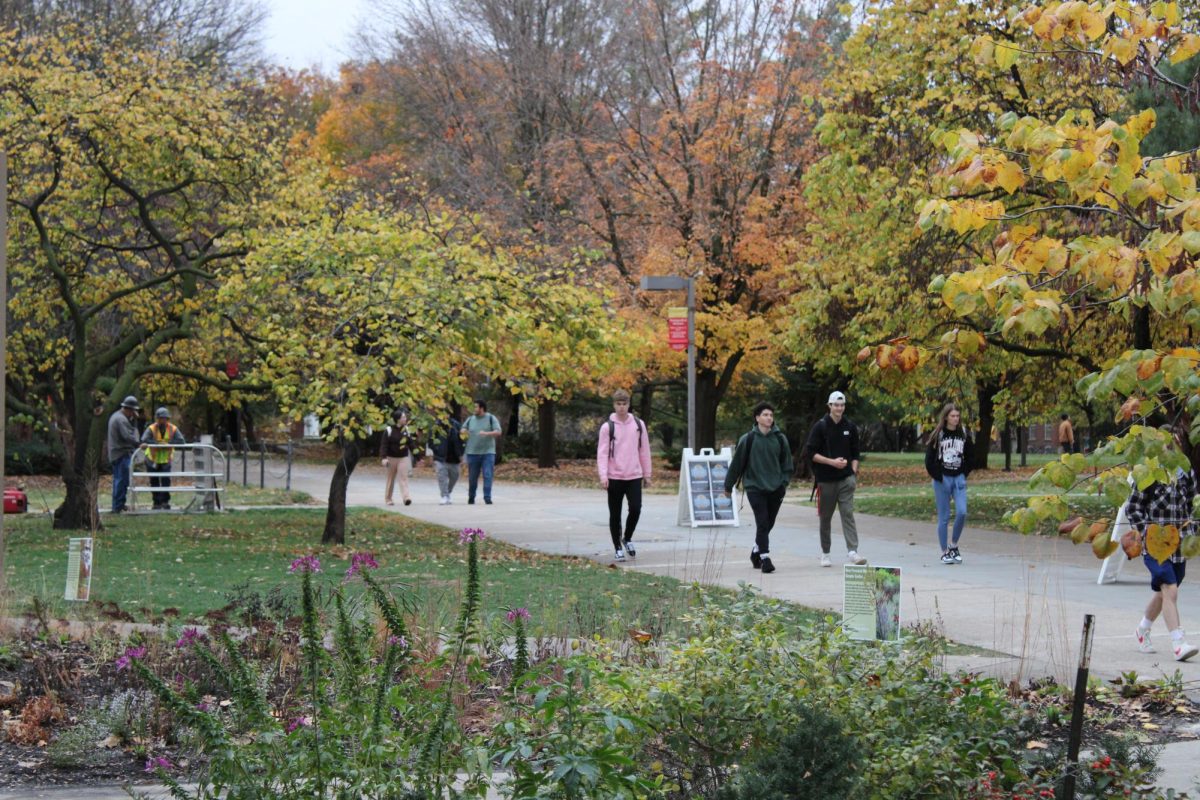Discovery Station: Whales exhibition brings together experiment and art project
July 16, 2017
Reiman Gardens’ Discovery Station: Whale exhibition combined experiments and art projects to spread the knowledge about whales. Visitors can go to the gardens from 10 a.m. to 2 p.m. each Saturday during the summer for a discovery station.
Discovery Station this year was composed of a series of exhibitions educating people about aquatic animals. People could find related sculptures in the Gardens, which included sea star, blue marlin, great white shark, jellyfish, polar bear, penguin, sea lion, trigger fish and whale.
Two students from Iowa State University, Hannah Bengtson and Clara Kittleson, both seniors in biology, were in charge of the whale exhibition. Bengtson was in charge of the experiment at the exhibit, which discussed the blubber of whales and why whales need it.
In the experiment, a kid first had to make a hypothesis by answering the question: “Do you think your hand will feel colder or warmer with a blubber coating in the cold water?”
Then the kid would put his hand in the ice water bath and feel how cold it was.
Then, they would take their hand out, let it warm back up to room temperature, put the hand in a bag with “blubber” coating on the outside and stick it in the ice water again. After the experiment, the kid could tell the difference between having their hand in ice water with and without “blubber,” testing the hypothesis they just made.
According to Bengtson, the “blubber” in the experiment is Crisco, a fatty shortening used for cooking.
“Blubber is made up with lipid, Crisco is also a type of lipid,” Bengtson said. Crisco works as insulation, which traps heat and protect the hand from losing heat. Crisco works the same on a hand as blubber on a whale.
Bengtson also explained to kids the functions of whale’s blubber: it helps animals float by increasing buoyancy, it keeps a whale’s organs warm in cold waters and serves as an energy source while in migration or times of stress.
Clara Kittleson, an education intern in Reiman Gardens, was in charge of the art project part of the exhibition. According to Kittleson, there is white mark on each whale’s tail and the white mark pattern on each whale’s tail is different and unique. Because of it’s uniqueness, researchers can track specific whales and tell them apart.
For the art project, kids stuck their fingertips on to the white ink pad and put their fingerprints on black paper, cut out in the form of a whale’s tail. “Each fingerprint is unique, like each white mark is unique,” Kittleson said.
Kittleson and Bengtson both want to do things related with plants and animals, as well as do things related to working with kids. Reiman Gardens is a good place for them to blend these two interests.
“I definitely learn a lot about educating people, and about plants and animals.” Bengtson said.







